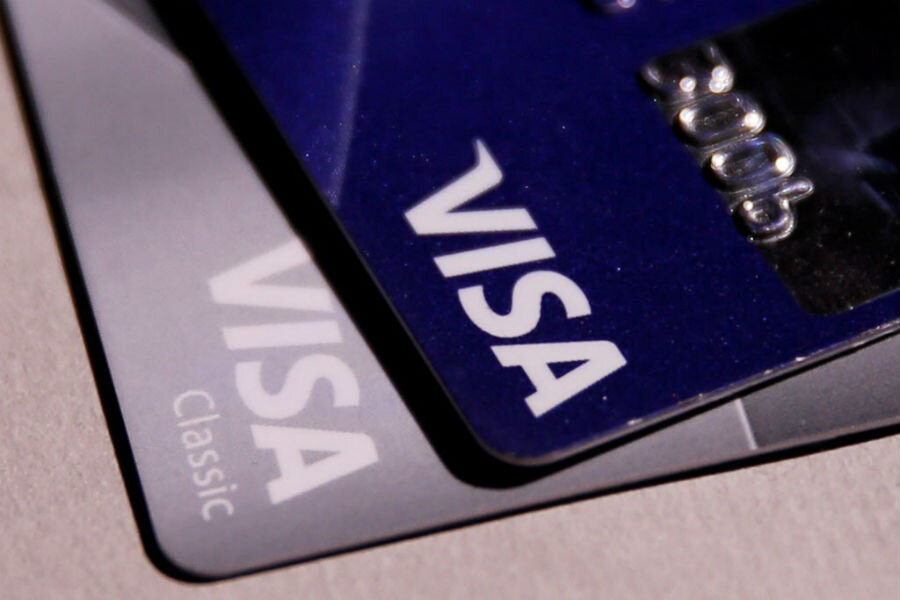People with bad credit are using credit cards more. Is that good or bad?
Loading...
The number of Americans skipping their credit card payments has been dropping since the height of the financial crisis, inching towards the low levels not seen since the economy’s glory days of 1999, reports the Federal Reserve Bank of New York.
Largely, says the Fed in its quarterly household debt and credit report, released Tuesday, the good news can be attributed to the fact that banks weren’t giving access to credit to people with low credit scores in the wake of the Great Recession that started in 2008.
But that’s changing, shows the report.
More people are getting credit, mostly in the form of auto loans and credit cards, which together helped raise total household debt by $35 billion to $12.3 trillion in the last quarter. Overall, household debt is 3 percent below its peak of $12.7 trillion, reached right before the recession hit, but 10 percent above its lowest point, hit after the recession ended.
The growing availability of credit is typically considered a marker of a growing economy, indicating that people are spending more money. However,there can be a downside when credit is too widely available to people who can't make their loan or credit card payments (a primary cause of the 2008-2009 financial crisis).
According to the New York Fed, banks are loosening up their grip on credit and doling out more credits cards to people with low credit scores (659 and below). Banks are also increasing the median limits on how much low-credit-score people can spend. In 2009, the median credit card limit was $500, an amount that doubled to $1,000 by 2015.
The Fed also found that people with lower credit scores have higher credit card balances than people with higher scores.
"It is something we need to keep an eye on if borrowing continues to grow rapidly," Scott Hoyt, senior director at Moody's Analytics, told CNBC.
A New York Federal Reserve economist says that even though more credit cards are going to people with lower credit scores, the share of those borrowers is low compared to pre-boom years, around 2003.
In the years before the Great Recession, 68 percent of Americans with credit cards used them. This declined to 59 percent during the Great Recession, and since has rebounded to 61 percent today, reports the Fed. However, among people with high credit scores, 88 percent use their credit cards, a share that is largely unchanged from decades past. Their credit limits also have grown between 2009 and 2015. Spending limits for borrowers with credit scores between 720 and 779 grew from $3,00 to $5,500 during that period. For those in the highest-rating category, 780 and above, limits nearly doubled from $4,200 to $8,000.
“Lower-credit-score borrowers, once squeezed out of the market and paying down debt, are beginning to recover their ability to access credit with newly opened cards—although the borrowers with high credit scores are seeing the biggest expansions to their borrowing limits,” writes the Fed.
An improving economy, plus regulations of bank lending practices in the wake of the recession, have led to fewer missed debt payments. The Fed says that barely 2 percent of mortgage balances, the largest component of household debt, went unpaid in the second quarter -- the lowest rate since mid-2007. New foreclosures were the lowest in 18 years.
People paying off student loans, however, appear to be struggling. There is a combined $1.3 trillion in student debt in the United States, and currently about 11 percent of student loan payments are either 90 or more days unpaid or in default. That figure has shown little improvement in recent years, as The Wall Street Journal points out.









